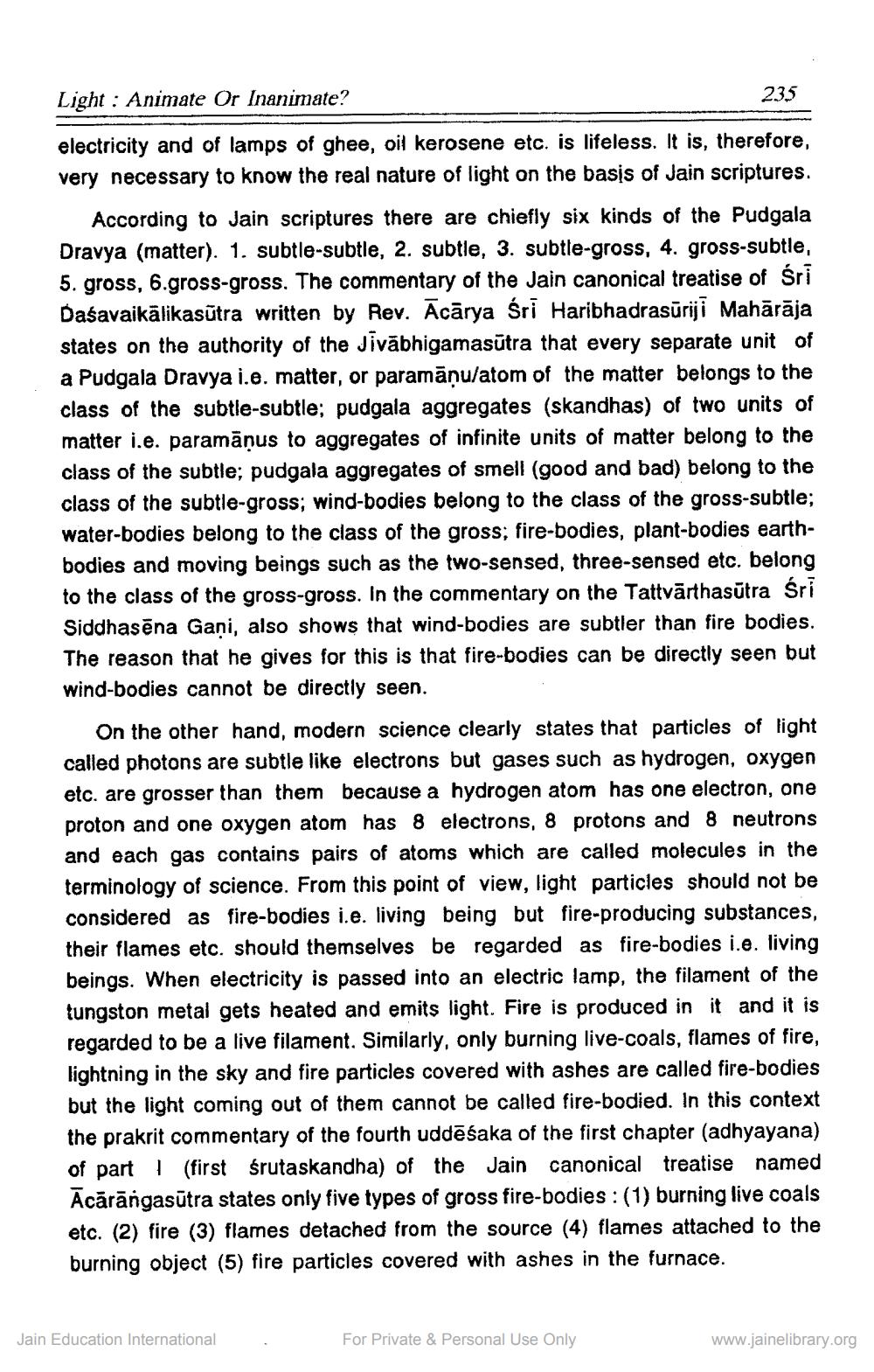________________
Light : Animate Or Inanimate?
235
electricity and of lamps of ghee, oil kerosene etc. is lifeless. It is, therefore, very necessary to know the real nature of light on the basis of Jain scriptures.
According to Jain scriptures there are chiefly six kinds of the Pudgala Dravya (matter). 1. subtle-subtle, 2. subtle, 3. subtle-gross, 4. gross-subtle, 5. gross, 6.gross-gross. The commentary of the Jain canonical treatise of Sri Daśavaikālikasūtra written by Rev. Ācārya sri Haribhadrasūriji Mahārāja states on the authority of the Jivābhigamasūtra that every separate unit of a Pudgala Dravya i.e. matter, or paramānu/atom of the matter belongs to the class of the subtle-subtle; pudgala aggregates (skandhas) of two units of matter i.e. paramānus to aggregates of infinite units of matter belong to the class of the subtle; pudgala aggregates of smell (good and bad) belong to the class of the subtle-gross; wind-bodies belong to the class of the gross-subtle; water-bodies belong to the class of the gross; fire-bodies, plant-bodies earthbodies and moving beings such as the two-sensed, three-sensed etc. belong to the class of the gross-gross. In the commentary on the Tattvärthasūtra Sri Siddhasēna Gani, also shows that wind-bodies are subtler than fire bodies. The reason that he gives for this is that fire-bodies can be directly seen but wind-bodies cannot be directly seen.
On the other hand, modern science clearly states that particles of light called photons are subtle like electrons but gases such as hydrogen, oxygen etc. are grosser than them because a hydrogen atom has one electron, one proton and one oxygen atom has 8 electrons, 8 protons and 8 neutrons and each gas contains pairs of atoms which are called molecules in the terminology of science. From this point of view, light particles should not be considered as fire-bodies i.e. living being but fire-producing substances, their flames etc. should themselves be regarded as fire-bodies i.e. living beings. When electricity is passed into an electric lamp, the filament of the tungston metal gets heated and emits light. Fire is produced in it and it is regarded to be a live filament. Similarly, only burning live-coals, flames of fire, lightning in the sky and fire particles covered with ashes are called fire-bodies but the light coming out of them cannot be called fire-bodied. In this context the prakrit commentary of the fourth uddēšaka of the first chapter (adhyayana) of part 1 (first śrutaskandha) of the Jain canonical treatise named Ācārāngasūtra states only five types of gross fire-bodies:(1) burning live coals etc. (2) fire (3) flames detached from the source (4) flames attached to the burning object (5) fire particles covered with ashes in the furnace.
Jain Education International
For Private & Personal Use Only
www.jainelibrary.org




